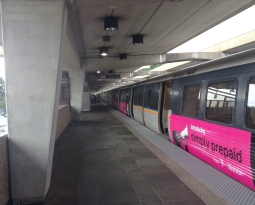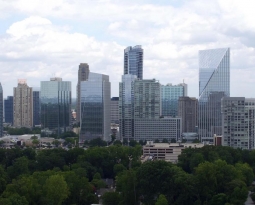8 Days of Sustainability: Insights and Tips to Getting Out of Your Car in Atlanta
**Guest Blog by Byron Rushing, Bicycle and Pedestrian Planner, Atlanta Regional Commission**
Walking and bicycling are inexpensive, healthy, and fun ways to travel. Unfortunately, they’re not always as safe and convenient as they should be. The Atlanta Regional Commission champions active transportation and has conducted research into how we can build more walkable communities. Here’s a snapshot of the lessons we’ve learned:
Many trips are short: Distances between destinations in Atlanta are often far, but most walking trips are less than one mile and most bicycling trips less than five. This means that walkable and bikeable communities must think about short trips and make destinations close. Density and compact development – when done sensitively – are the foundation of a walkable community.
Crash risks are predictable: Looking at over ten years of crashes involving pedestrians, there is a clear conclusion – infrastructure matters. Most crashes, especially fatalities, occur in predictable locations where traffic is traveling faster than 35 miles per hour, the road is dark or unlit, and where crosswalks or bike lanes are absent. Understanding these risks can help us design and build safer roads.
Transit makes walking easier and vice versa: While walking is great for short distances, busses and trains are excellent for traveling long distances. Communities such as Buckhead that are served by multiple train stations and bus routes are excellent opportunities for multi-modal trips. But the “first and last mile” connections to the system need to be comfortable and convenient.
People want to walk or bike more: Regional polling routinely shows that people value walkable communities and opportunities to bike. When we ask people “what would get you to walk or bike more?”, here’s a typical response: “It would be easier for me if there were sidewalks and crossings. In my neighborhood, you have to walk in the grass or street and jaywalk to cross.”
The research is clear than when walking and bicycling are convenient many people chose to travel outside their car. For people who want to walk or bike more there are many things we can do today, even while we wait for new infrastructure to be built.
Find a friend: There are many groups in Atlanta that promote walking and bicycling. Reach out to PEDS, the Atlanta Bicycle Coalition, or Livable Buckhead and find a passionate advocate who can show you how to travel.
Ride the bus: Daily schedules are often complex, but multi-modal trips can save money, reduce stress, and are often faster than traffic. Find a bus schedule or transit card and pair those connections with a healthy walking trip. In Buckhead, bikeshare and rentable scooters can help cover longer distances and speed up travel time.
Get involved for great communities: The benefit of living in a fast-growing region is that we have many opportunities to build and rebuild our infrastructure to better meet our needs. Contact your elected officials and let them know about the importance of walkable neighborhoods and convenient transit service to building a world-class city.
For more information on ARC’s walking and bicycling work, please visit our website at:
https://atlantaregional.org/transportation-mobility/bike-ped/bicycle-pedestrian/
About the Author
Byron Rushing is a transportation planner with the Atlanta Regional Commission focused on bicycling, walking, and livability planning. He has worked in bicycle, pedestrian, transportation, and placemaking planning in Atlanta, Georgia, and the Southeast since 2006.







